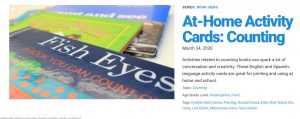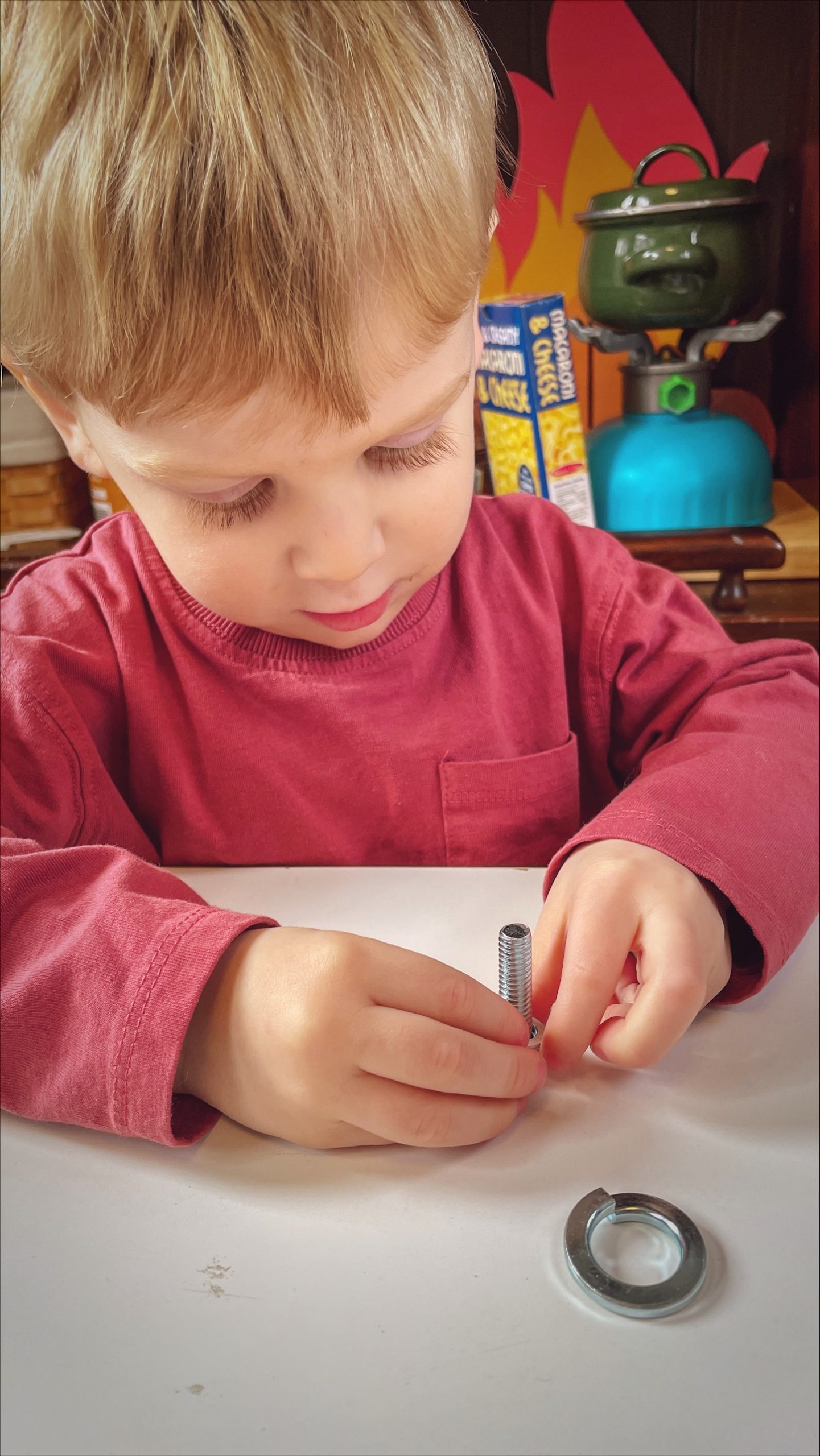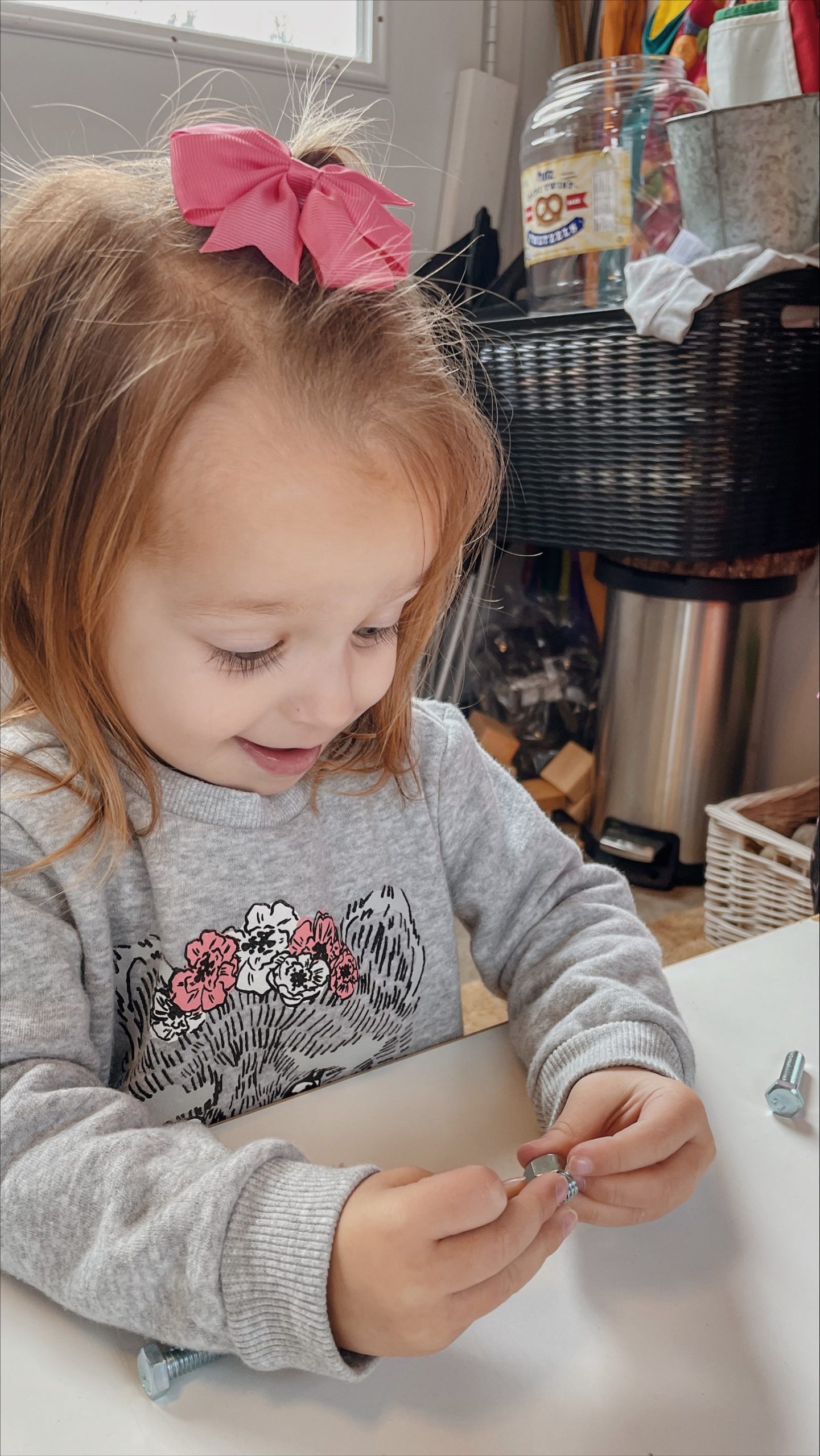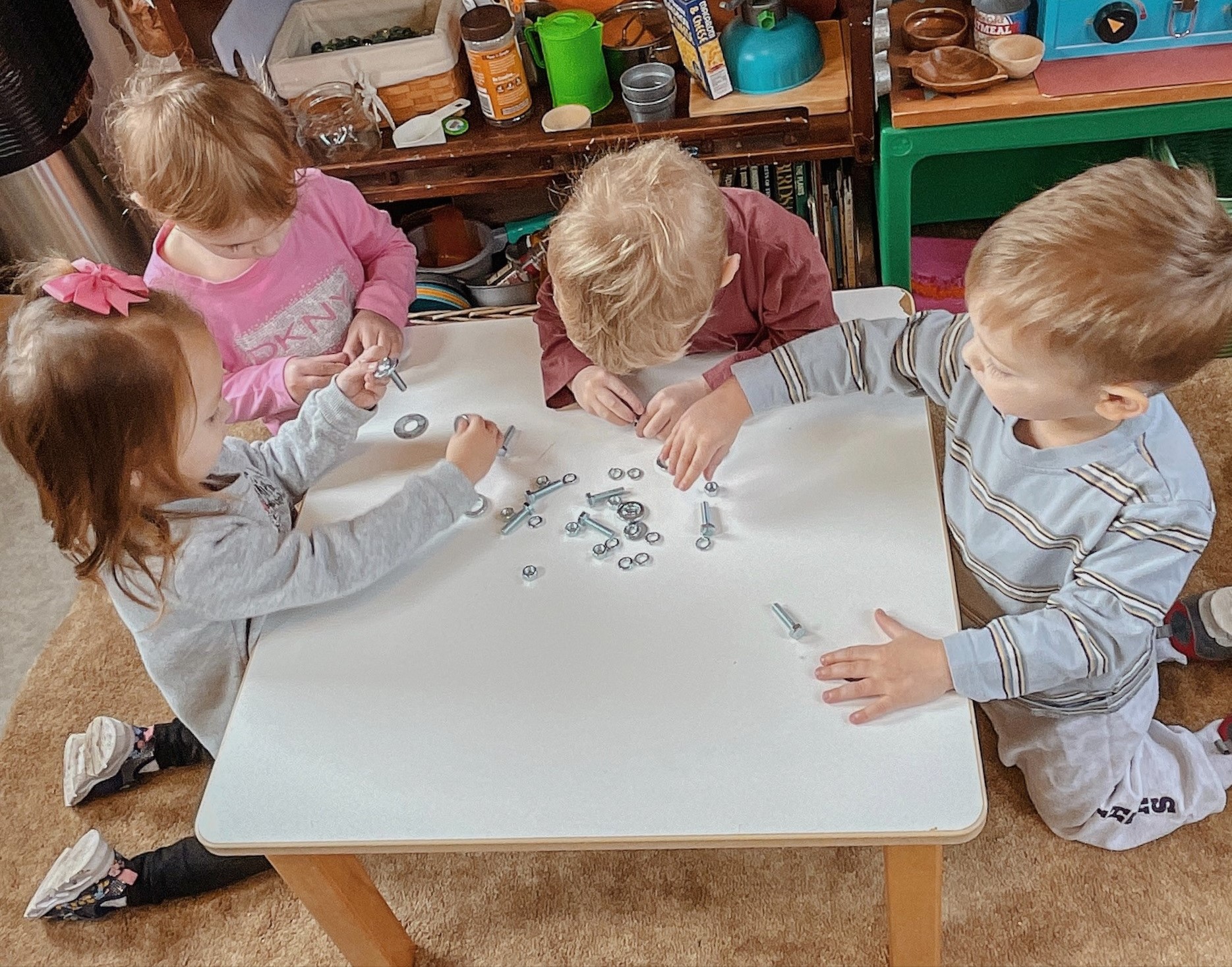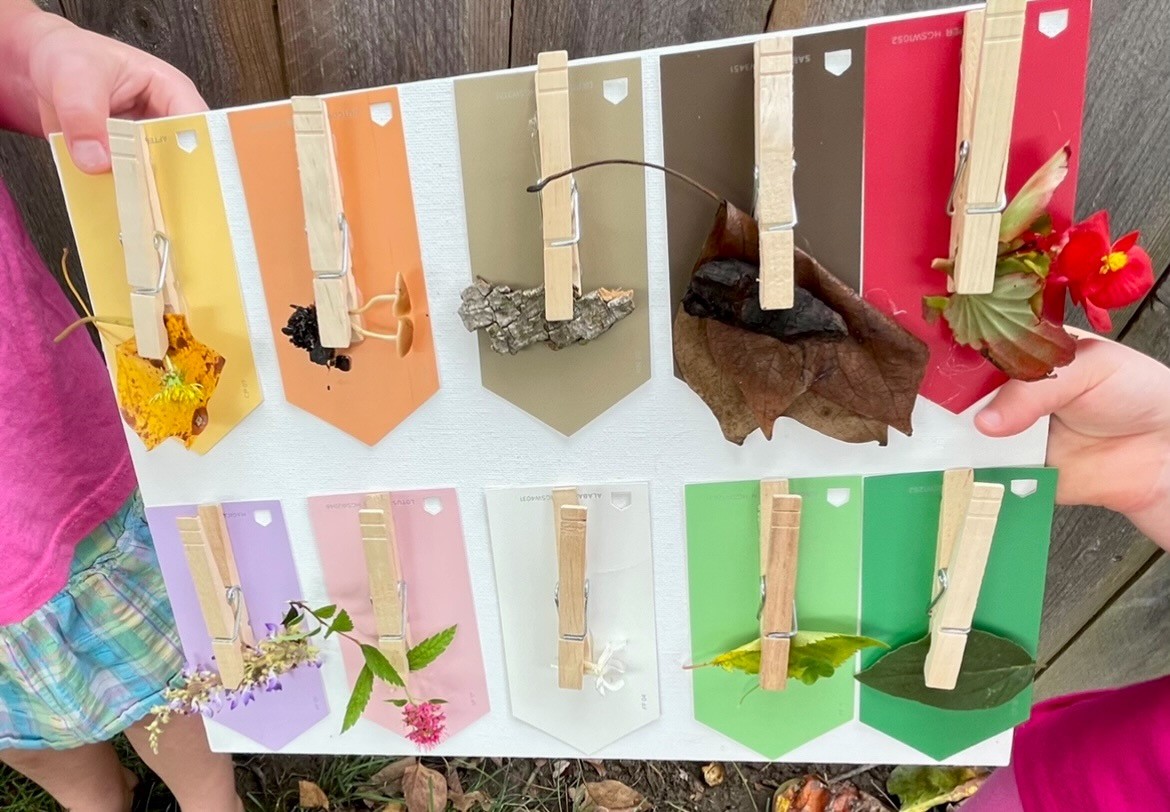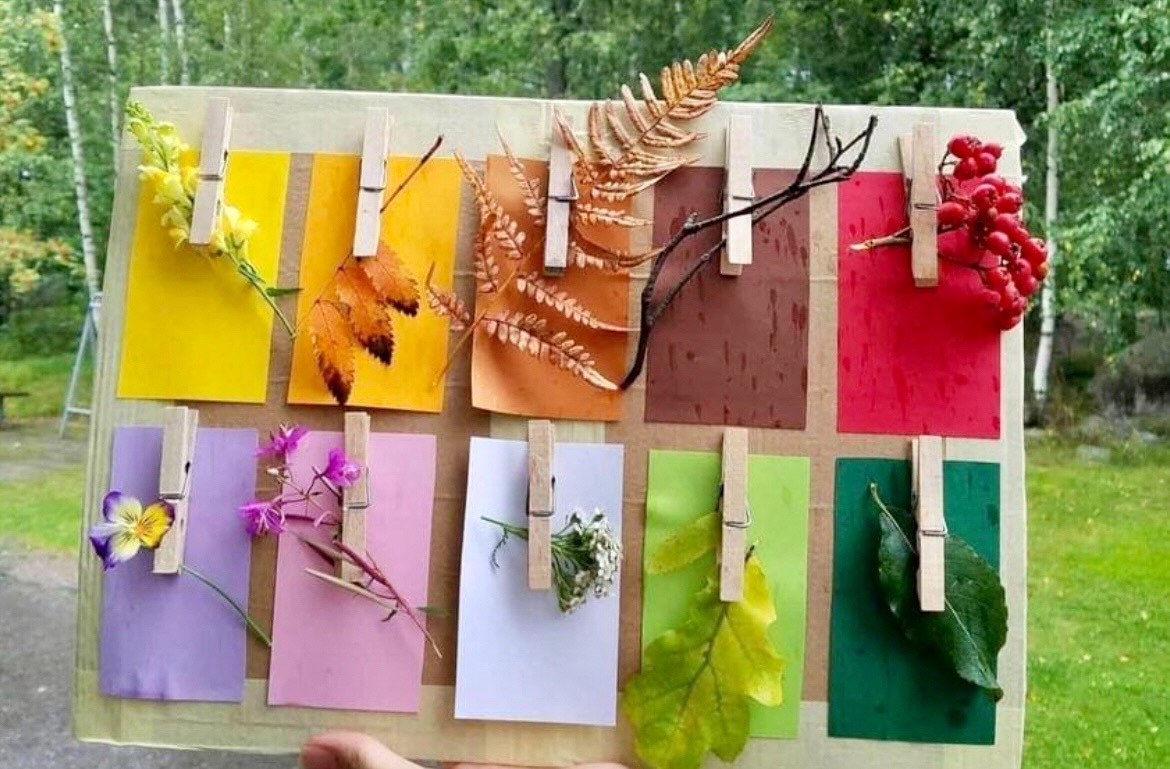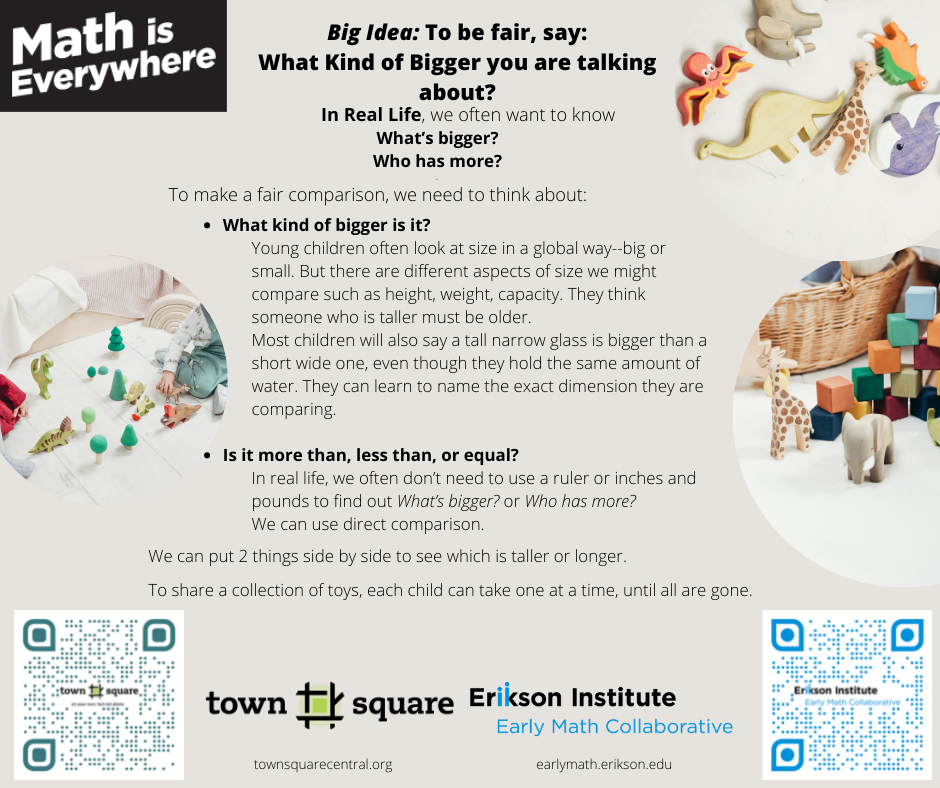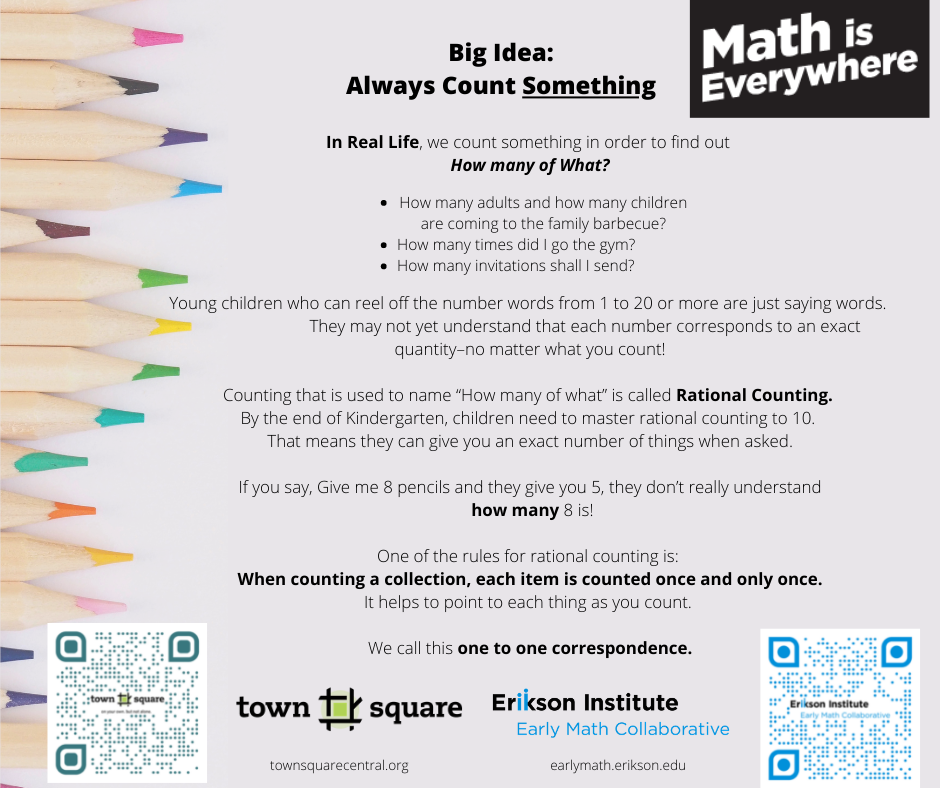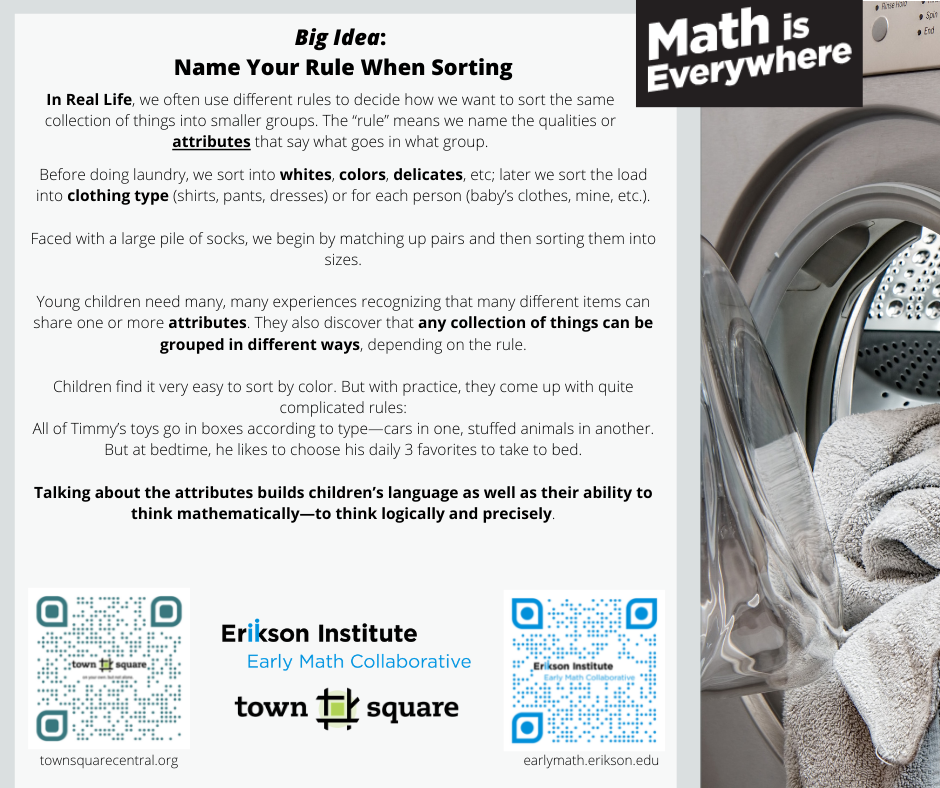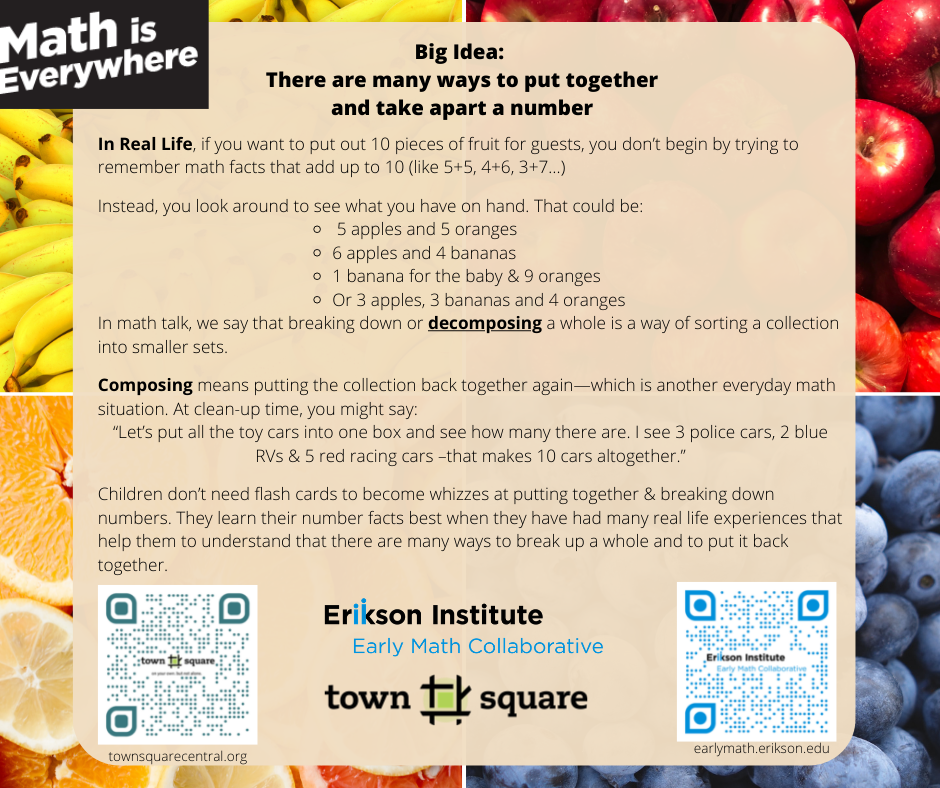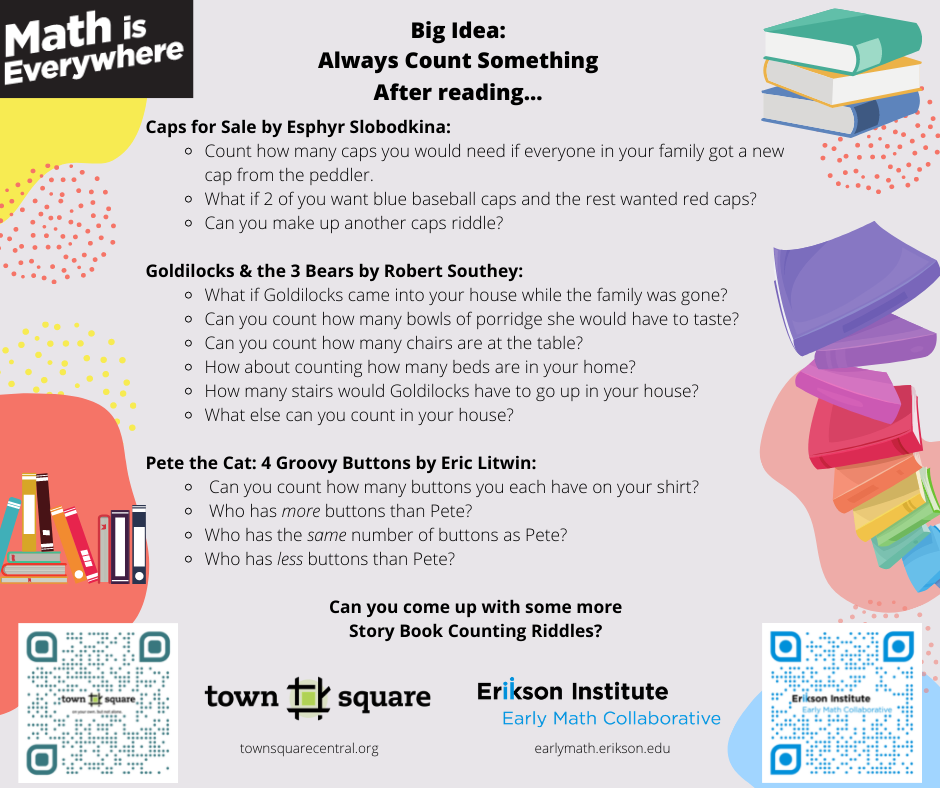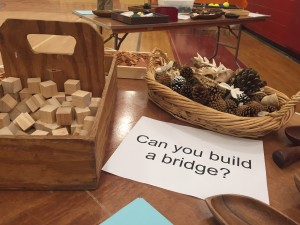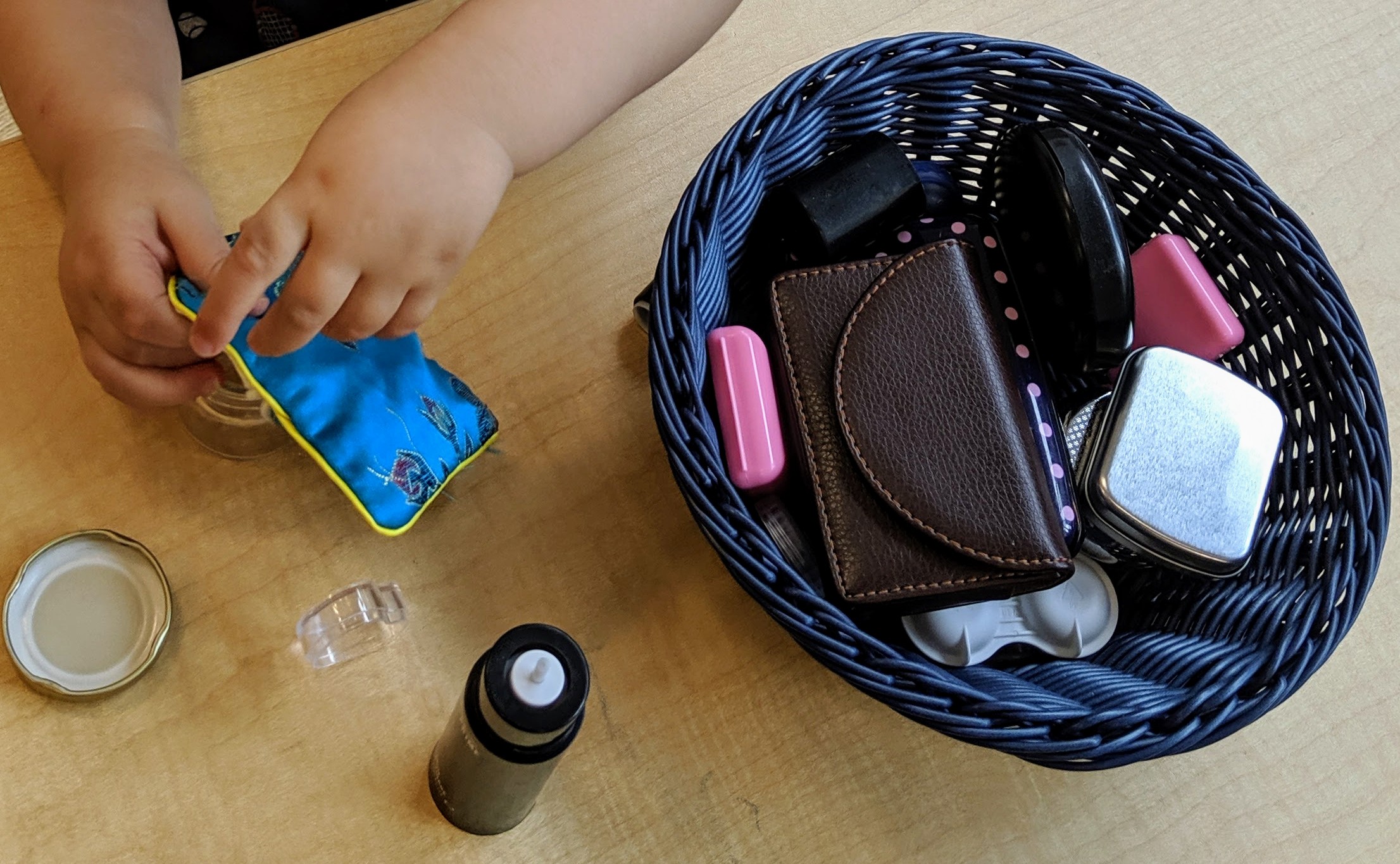This short article will give you five foundational mathematical concepts to pay attention to an emphasize in your conversations and games with infants and toddlers.
Early Math Collaborative is a part of Erikson institute dedicated to providing math resources and professional development for educators and administrators.
The collaborative recently launched Download format; making resources available for immediately download and printable for everyone.
Enjoy these at-home activities cards to help children explore numbers, shapes, sorting and more!
At-home activities cards are available in English and Spanish
Playing with Nuts and bolts
Nuts and bolts may seem like a simple activity, but it provides children with many great opportunities to explore and build on their skills.
- Fine motor skills.
* Hand and eye coordination as children grasp and pick their selection of bolts and then attach the nuts and bolts.
* Twisting, pinching, rotating give fingers muscles a workout, skills needed later for writing
- Math skills
* Giving children a variety of bolts and nuts allows them the opportunity to sort, match, categorize as they make a selection and plan how to use them.
* Create patterns, count and describing of different attributes including size
- Language skills
* Back and forth conversation as they work with other children
* Exploration and explanation of their creation and learning to others
- Creativity
* So much creativity as children came up with new ways to create and play, testing their ideas.
- Sensory experience
* Different textures, weights, sizes, and materials can be incorporated, experimenting with touch and sound.
Explore the mathematical big ideas of measurement, children’s understanding of these big ideas, and how adults can scaffold children’s developing thinking and mathematical practice in this virtual training for family child care providers. Building an understanding through investigation, video analysis, and reflection (self or with colleagues).
Objectives:
- Providers will explore the math ideas that guide comparison and measurement
- Providers will build an understanding of how 3- to 6-year-old children develop their thinking about comparison and measurement
- Providers will consider strategies for scaffolding children’s developing thinking and communication skills
- Providers will reflect on how to use their new understandings in their own work setting.
Town Square Indiana modules can be found in Indiana Learning Paths. Please follow the link below to log into your I-lead account and click on “Start Your Indiana Learning Path”. Once in Indiana Learning Paths please search for:
Town Square – What kind of “big” is it? Comparison & Measurement
Creating a nature scavenger color-hunt game is a fun nature-themed activity to get your group outdoors. This is an activity that, no matter their age, they will stay busy and observe as they play creatively and explore outside.
You can use a canvas panel or a piece of cardboard, I would say roughly the size of a medium-large pizza box. You then want to take 10 color paint swatches. I like to take a walk in my space and quickly take 10 pictures to match when I get to my hardware store. This is something that will, of course, change with the seasons.
We did 10 colors; my group is 2.5-4 years old. It’s entirely up to you how you choose to do this; you can cut smaller pieces of cardboard and give each child 5 colors; you can do it as a group as we did. You can add shapes by cutting the paint sample into a circle or triangle. You can also use this as a take-home activity for family engagement. Ask families to bring it back and discuss it with the group.
So after you have the canvas panel or cardboard, the color swatches, and 10 clothespins, you want to hot glue the colors swatches down and the clothespins. Then go explore for colors!
You can set rules for the game, like the color green can not be grass. Once the child finds the color, they yell “I found yellow”, clip it, and attach it to the board. We display our board and showcase it for pick up. Children are always so proud to name what they found and the color it matches.
Town Square and Erikson Institute’s Early Math Collaborative present you with a great tool to use in helping communicate with families the Big Idea of early math. These bookmarks and graphics provide families with at-home activities, games, and book ideas connected to math concepts such as number sense, measurement, and patterns!
To share with families, print the PDF bookmarks or save the images and attach them to your newsletter, email, or social media post.
Bookmarks
Loose parts are materials that can be used in a variety of ways. It is very likely that you have things that can be used for loose parts play already around, such as bottle caps, rocks, pinecones, etc. This handout was created collaboratively between Town Square and the Early Math Collaborative at Erikson Institute as a resource for the Oak Park Collaboration for Early Childhood Symposium.
Anticipating a break from child care in addition to stresses that families are under with planning for travel and parties at this time of year can affect children’s behavior. Part of this is can be due to not having a good sense about what to expect. One activity that can help children make sense of what is coming up is to make a paper chain to count down the days until the break or event.
Have children help to cut strips of colored paper and use one to make a loop that you glue or staple closed. Add the number of loops onto the chain for the number of days that you have left until break and each day a child can remove one of the loops. This give a visual indication to children about how many more days it will be until the break.
You can make one chain for the group or each child can make their own. You can practice counting up and counting down using the number of loops on the chain. You can also encourage children to make patterns with different colors of paper as they create their chains.
Goals: Help children manage their behavior around anticipation of the break. Practice math concepts of patterning and counting up and down.

As adults, we utilize a calendar for scheduling and to remember important events and holidays. While it might be second nature to look at the calendar and understand which month, date, and day of the week we are in, a calendar is very confusing for children. We can utilize a calendar because we have gained the knowledge and experience to know how time works. Young children are developing this skill.
To foster this understanding the focus of calendars should be a visual representation of a sequence (yesterday, today, tomorrow). Time should also be relatable to children, by understanding what they did in the morning (arrival), afternoon (after a nap), evening(at home). A great tool to use in the classroom to help children build this understanding is a linear calendar. A linear calendar helps children understand the pattern of time, incorporate their own experience of the day, and visually see time moving.
Encourage your school age children to create a collection. They might take a container or bag and collect some things that they find in nature while outside, or they might collect a variety of stray parts or art and craft materials from around your home. Ask them to sort their collection in different ways and involve the other children in viewing their collection and trying to discover their sorting pattern. Challenge them to sort their collections in multiple ways and describe the rules they have established for sorting.
Goal: Children will practice sorting materials by different attributes and describing the different qualities of the materials in their collection.

